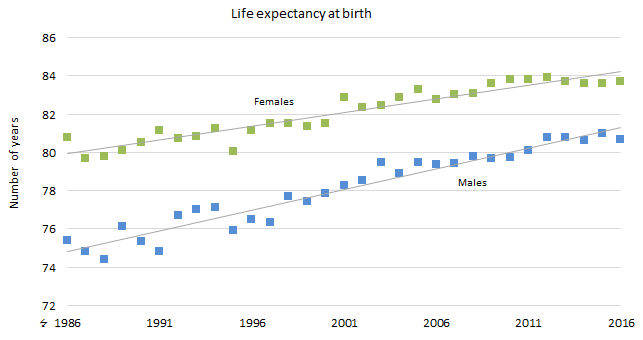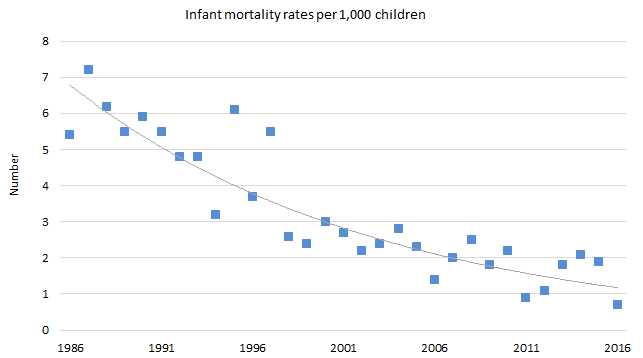In 2016, the life expectancy in Iceland was 80.7 years for men and 83.7 years for women.
Life expectancy at birth measures how long, on average, people can be expected to live at a given moment in time based on the population age-specific mortality rates. These rates have been decreasing over the last decades. As a result, we can expect people to live longer than the calculated life expectancy shows.
This is also reflected in the longtime evolution of the life expectancy, which has increased by six and four years for men and women respectively, during the last 30 years (see Figure 1).

Ten years averages (2006-2015) show that men in Iceland and Switzerland have the highest life expectancies in Europe, with 80.4 and 80.2 years. They are followed by Liechtenstein (79.9 years), Sweden (79.7), Italy (79.6) and by Spain and Norway (79.2 years). The shortest life expectancies belong to men in Moldavia (65.6), Ukraine (64.3) and Russia (62.5).
According to the same ten years averages, women in Spain and France have the longest life expectancy in Europe (85.3 years). Following are the life expectancies of women in Switzerland (84.9), Italy (84.7), Liechtenstein (84.1) and Iceland (83.8 years). The lowest values are recorded in Ukraine (75), the Russia (74.6) and Moldavia (73.6 years).
Infant mortality in Iceland is the lowest in Europe
In 2016, 2,309 residents of Iceland died, 1,197 men and 1,112 women. The mortality rate was 6.9 per 1,000 inhabitants and the infant mortality rate was 0.7 per 1,000 life births.

The infant mortality rate in Iceland averaged over a ten years period (2006-2015) was 1.8 per 1,000 life births which is the lowest rate in Europe. The second lowest average values (2.0) are recorded in San Marino and Andorra, followed by Finland (2.4), Slovenia and Sweden (2.5). The highest infant mortality rates are recorded in Turkey (13.8).
The ten years average values for life expectancy and mortality rates are based on Eurostat database.